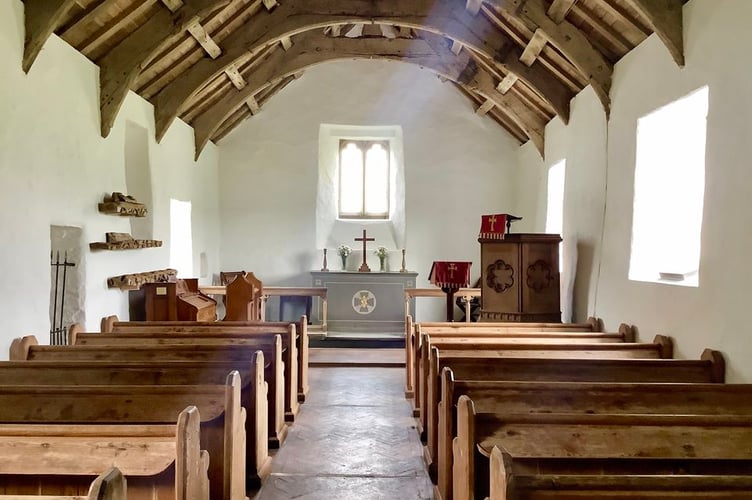The restoration of the ‘iconic’ Mwnt church is all but complete after it was damaged by vandals last year.
The Holy Cross Church - or Eglwys y Grôg - on the cliffs in the tiny Ceredigion hamlet is the oldest in the county.
But last January it made national headlines after it saw its windows smashed, gate broken and historically significant interior damaged.
In response, crowdfunding efforts exceeded a £20,000 target in just a few days and raised a further £11,000, which has now been used to fund extra renovations which are nearing completion.

Ceredigion county councillor for Aberporth and Y Ferwig, Clive Davies, told the Cambrian News: “Work on the outside of Eglwys y Grog has been completed ready for a busy summer of visitors, services and weddings.
“With thanks to the overwhelming response to the fund-raising campaign after the vandalism, the church has not only made the repairs required but additional work for its long-term preservation.
“I would like to thank the advice provided by the church wardens, heritage experts, (Welsh Government conservation body) Cadw and the thousands who donated to the fund to safeguard the future of this church.
“No doubt, we’ll have tens of thousands visiting it over the busy summer ahead, it has also become a popular location as wedding venue.”
Cllr Davies confirmed works on the interior and the majority of the exterior are now complete. He says the church holds a special place in his heart with plaques in honour of his great-grandparents standing by the altar.
Church warden Maggie Hughes previously told the Cambrian News that thanks to the generosity of donations – which came from all over the world – the renovations could go much further than they expected.
The windows, gate and the donation box have been repaired with the help of special architects from Saint David’s diocese.
The pews have been cleaned and the walls whitewashed – while the insides have been treated for dampness and the roof and flooring reinforced.
The picturesque 14th Century church - which hasn’t been renovated for decades - sees more than 30,000 visitors every year and attracts worshippers, photographers and historians.
Following the incident, Wales’s four police forces linked up with heritage bodies including the Royal Commission to drive down so-called ‘heritage crime’ - warning the public that once sites of special significance are gone, they cannot be returned.





Comments
This article has no comments yet. Be the first to leave a comment.